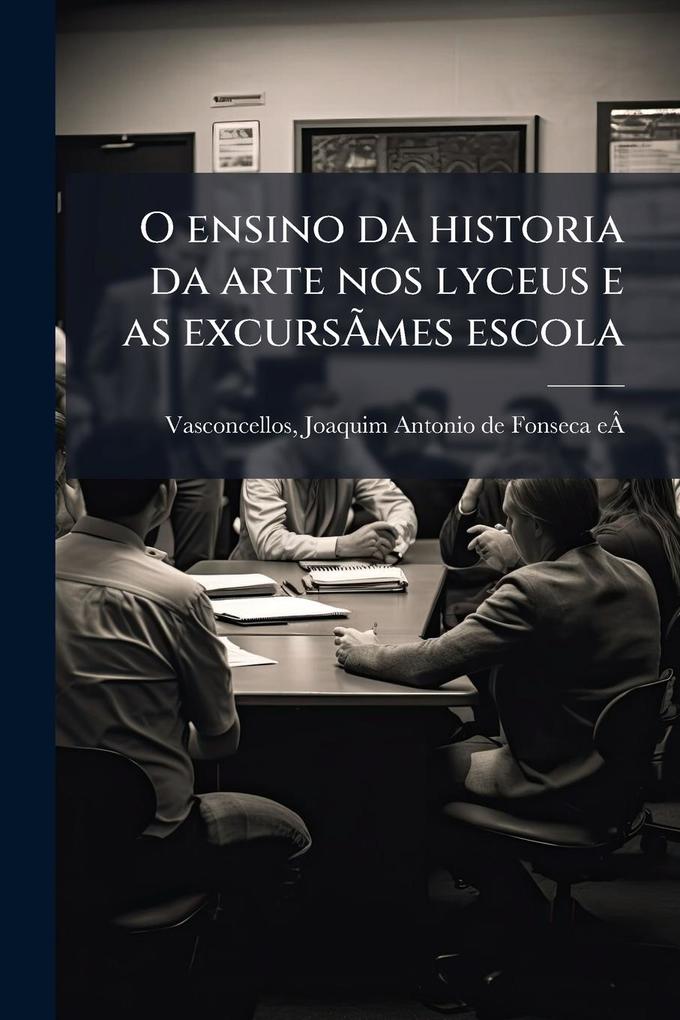
Zustellung: Fr, 01.08. - Mi, 06.08.
Versand in 2 Wochen
VersandkostenfreiBestellen & in Filiale abholen:
"O ensino da historia da arte nos lyceus e as excursões escola" by Joaquim Antonio de Fonseca e Vasconcellos explores the teaching of art history in Portuguese lyceums (secondary schools) and the role of school excursions in enhancing students' understanding. Published in 1908, this work provides a valuable insight into the educational practices and pedagogical approaches of the time. Vasconcellos, a prominent figure, delves into the methods and strategies employed to impart art historical knowledge to young students, highlighting the importance of experiential learning through organized trips and visits.
This book offers a historical perspective on the curriculum and educational philosophy prevalent in early 20th-century Portugal. It remains a significant resource for researchers and educators interested in the history of art education and the evolution of teaching methodologies. The text underscores the enduring relevance of integrating practical experiences with theoretical instruction to foster a deeper appreciation for art and its historical context.
This work has been selected by scholars as being culturally important, and is part of the knowledge base of civilization as we know it. This work was reproduced from the original artifact, and remains as true to the original work as possible. Therefore, you will see the original copyright references, library stamps (as most of these works have been housed in our most important libraries around the world), and other notations in the work.
This work is in the public domain in the United States of America, and possibly other nations. Within the United States, you may freely copy and distribute this work, as no entity (individual or corporate) has a copyright on the body of the work.
As a reproduction of a historical artifact, this work may contain missing or blurred pages, poor pictures, errant marks, etc. Scholars believe, and we concur, that this work is important enough to be preserved, reproduced, and made generally available to the public. We appreciate your support of the preservation process, and thank you for being an important part of keeping this knowledge alive and relevant.
This book offers a historical perspective on the curriculum and educational philosophy prevalent in early 20th-century Portugal. It remains a significant resource for researchers and educators interested in the history of art education and the evolution of teaching methodologies. The text underscores the enduring relevance of integrating practical experiences with theoretical instruction to foster a deeper appreciation for art and its historical context.
This work has been selected by scholars as being culturally important, and is part of the knowledge base of civilization as we know it. This work was reproduced from the original artifact, and remains as true to the original work as possible. Therefore, you will see the original copyright references, library stamps (as most of these works have been housed in our most important libraries around the world), and other notations in the work.
This work is in the public domain in the United States of America, and possibly other nations. Within the United States, you may freely copy and distribute this work, as no entity (individual or corporate) has a copyright on the body of the work.
As a reproduction of a historical artifact, this work may contain missing or blurred pages, poor pictures, errant marks, etc. Scholars believe, and we concur, that this work is important enough to be preserved, reproduced, and made generally available to the public. We appreciate your support of the preservation process, and thank you for being an important part of keeping this knowledge alive and relevant.
Produktdetails
Erscheinungsdatum
22. Mai 2025
Sprache
portugiesisch
Seitenanzahl
20
Verlag/Hersteller
Produktart
kartoniert
Gewicht
45 g
Größe (L/B/H)
234/156/1 mm
ISBN
9781024132977
Bewertungen
0 Bewertungen
Es wurden noch keine Bewertungen abgegeben. Schreiben Sie die erste Bewertung zu "O ensino da historia da arte nos lyceus e as excursões escola" und helfen Sie damit anderen bei der Kaufentscheidung.









